The Palace and Park of Fontainebleau: The Palace of Fontainebleau is one of the grandest and largest of the royal châteaux of France. The Palace and Park of Fontainebleau are surrounded by the city of Fontainebleau and the vast Forest of Fontainebleau, a former royal hunting park. The palace is located about 55 km southeast of Paris and 70 km from the most famous palace of France, Versailles. The medieval royal hunting lodge and later château was the residence of French monarchs from the 12th until the 19th century. The royal hunting lodge of Fontainebleau was enlarged and embellished in the 16th century by the French King François I, he wanted to create a 'New Rome'. The Palace of Fontainebleau is a combination of the artistic traditions of France and the French Renaissance style. The interior is decorated in the Mannerist Style. The Palace of Fontainebleau is the place where Napoleon I abdicated his throne before being exiled to Elba in 1814. The Palace of Fontainebleau was declared a French national museum in 1927. The Palace and Park of Fontainebleau gained the status as a UNESCO World Heritage in 1981.
www.werelderfgoedfotos.nl © Copyright World Heritage Photos
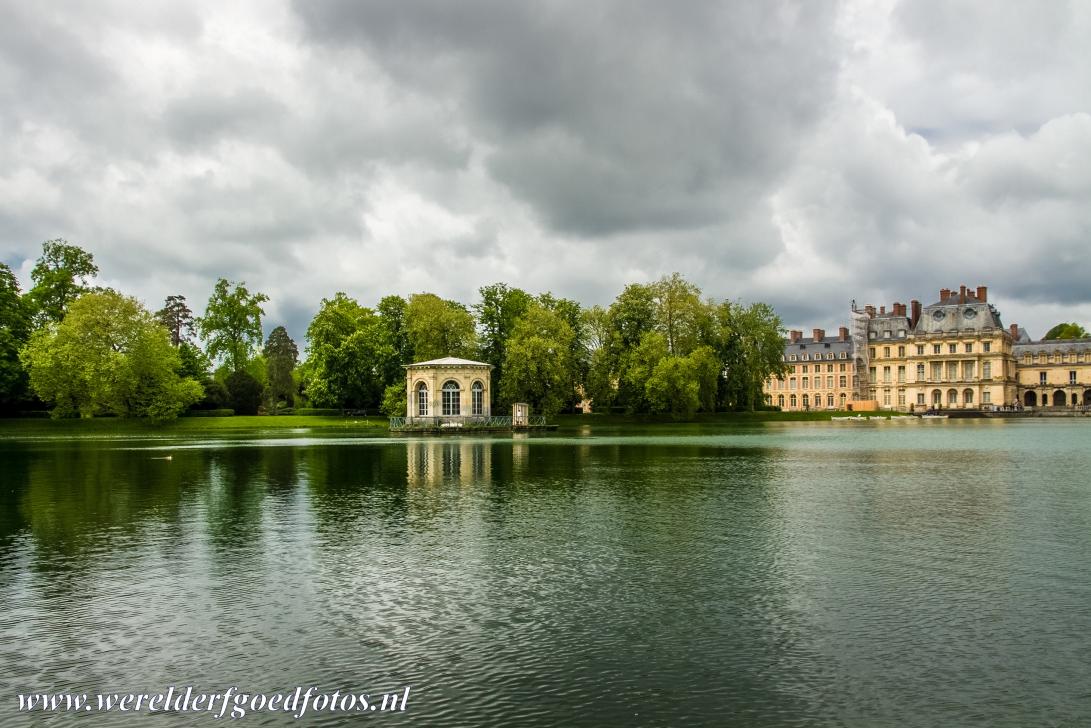
The Palace and Park of Fontainebleau: The Carp Lake and the 17th century octagonal pavilion. The Palace of Fontainebleau is a former royal residence in France. Fontainebleau was inhabited continuously from the 12th century to the fall of Napoleon III in 1870. The most famous French monarchs have left their mark on the palace, such as Napoleon Bonaparte. The Palace and Park of Fontainebleau were inscribed on the UNESCO World Heritage List in 1981.

The Palace and Park of Fontainebleau: The Carp Lake and the 17th century octagonal pavilion. The Palace of Fontainebleau is a former royal residence in France. Fontainebleau was inhabited continuously from the 12th century to the fall of Napoleon III in 1870. The most famous French monarchs have left their mark on the palace, such as Napoleon Bonaparte. The Palace and Park of Fontainebleau were inscribed on the UNESCO World Heritage List in 1981.
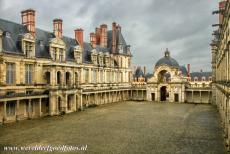
The Palace and Park of Fontainebleau: The Cour Ovale, the Oval Courtyard. The central point in the Palace of Fontainebleau is the Oval Courtyard. The Oval Courtyard marks the location of the original medieval hunting lodge. The Oval Courtyard is lined with 16th and 17th century façades. In that period, the courtyard had a fortified entrance gate, called the Porte Dorée, Golden Gate. Since the time of the French King Henry IV, the gate opens onto the Cour des Offices.
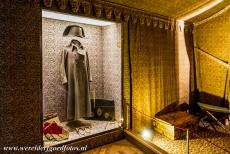
The Palace and Park of Fontainebleau: The long coat and bicorne of Napoleon Bonaparte. One of the wings of the palace houses the Napoleon I Museum. The museum houses a collection of furniture, paintings, sculptures, gold and silverware, costumes and documents of the imperial family, among the objects are the long coat and the famous bicorne hat of Napoleon Bonaparte and also objects from his military campaigns.
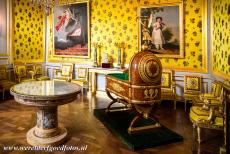
The Palace and Park of Fontainebleau: The cradle of Napoleon II, the King of Rome, the son of Napoleon Bonaparte and Marie Louise of Austria. Napoleon II was named Napoleon François-Joseph Charles. As heir to the French Empire, his father gave him the title King of Rome. After the fall of Napoleon, Napoleon II was briefly the titular the Emperor of the French, but he never actually ruled France. He lived the rest of his short life in Vienna as Franz, Duke of Reichstadt.
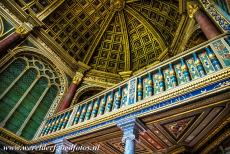
The Palace and Park of Fontainebleau: The Saint Saturnin Chapel was built during the reign of Francis I. The Saint Saturnin Chapel is situated behind the ballroom. The lower chapel was built in the 12th century, but totally rebuilt under Francis I. The windows of the lower chapel were installed during the reign of Louis-Philippe, designed by his daughter Marie. The upper chapel was the royal chapel. The upper chapel and dome of the chapel were decorated by one of the masters of the French Renaissance, Philibert de L'Orme.
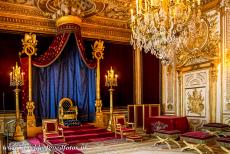
The Palace and Park of Fontainebleau: The throne room. The throne of Napoleon I is placed on a dais. The throne room is still in its original state. The Palace of Fontainebleau was the location of the historic meeting between Pope Pius VII and Napoleon in 1804. The Pope travelled from Rome to France, it was the intention of Napoleon to be crowned by Pope Pius VII. But on the day of the coronation, Napoleon Bonaparte grabbed the crown from the Pope's hands and placed it on his own head and crowned himself Emperor of France.
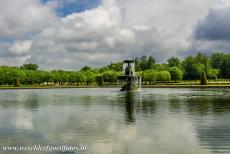
The Palace and Park of Fontainebleau: The pond and fountain in the Grand parterre, the Grand parterre is among the largest French gardens in Europe. The Palace and Park of Fontainebleau were designed and embellished by great artists commissioned by Francis I, Henry IV, Louis XIII, Louis XIV, Louis XVI and Marie-Antoinette, Napoleon Bonaparte and Joséphine de Beauharnais. The Palace and Park of Fontainebleau was declared a UNESCO World Heritage in 1981.
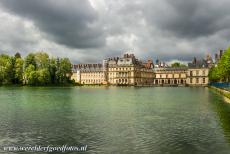
Palace and Park of Fontainebleau: Behind the Carp Lake lies the Cour de la Fontaine. The Carp Lake was a swamp and was turned into a lake under King Francis I. The Palace of Fontainebleau was a royal residence and the home of many French monarchs, the palace is surrounded by the town of Fontainebleau and the Forest of Fontainebleau, a former royal hunting park. Napoleon called Fontainebleau the 'True home of Kings' and 'House of Ages'.
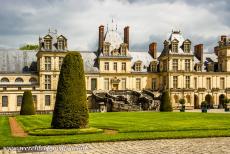
The palace and Park of Fontainebleau: The famous horseshoe-haped staircase is situated in the White Horse Courtyard. The White Horse Courtyard is also called the Court of Farewells, it was built during the reign of Louis XIII. The Palace of Fontainebleau is the location where Napeleon I abdicated his throne before being exiled to Elba. The Palace of Fontainebleau became a national museum in 1927.
